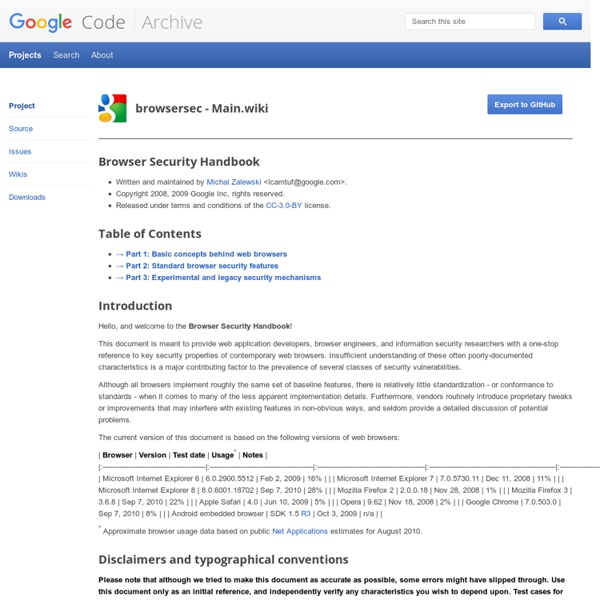



Jags RPG :: Jags - Not Just Another Gaming System Understanding node.js Node.js has generally caused two reactions in people I've introduced it to. Basically people either "got it" right away, or they ended up being very confused. If you have been in the second group so far, here is my attempt to explain node: It is a command line tool. You download a tarball, compile and install the source.It let's you run JavaScript programs by typing 'node my_app.js' in your terminal.The JS is executed by the V8 javascript engine (the thing that makes Google Chrome so fast).Node provides a JavaScript API to access the network and file system "But I can do everything I need in: ruby, python, php, java, ... !". I hear you. "Get to the point!" Alright, I will. "Huh?" That's right, everything runs in parallel, except your code. The day starts by one servant waking up the king and asking him if he needs anything. Once a servant finishes a task, he lines up outside the kings quarter to report. "That's fantastic, but could you quit the silly metaphor and speak geek to me?" Sure. No.
Linux Installation Guide 1. Introduction This guide contains all the commands you should use to complete a stage3 installation of Gentoo. You need a connection to the Internet to download the stage3 and Portage snapshots. Timing output follows all commands that take more than a couple of seconds to finish. 2. Installation Media Download a CD from one of our mirrors. Burn the CD and boot it. Booting the CD Press F2 at the boot screen to find out what boot options exist. Optional: loading modules If you used the nodetect option, once booted, load the required modules. Network Configuration If your network does not work already, you can use net-setup to configure your network. For wireless access, use iwconfig to set the wireless parameters and then use either net-setup again or run ifconfig, dhcpcd and/or route manually. If you are behind a proxy, do not forget to initialize your system using export http_proxy, ftp_proxy and RSYNC_PROXY. Alternatively, you can start networking manually. Preparing the Disks Chrooting Reboot
Execution in the Kingdom of Nouns Hello, world! Today we're going to hear the story of Evil King Java and his quest for worldwide verb stamp-outage.1 Caution: This story does not have a happy ending. It is neither a story for the faint of heart nor for the critical of mouth. If you're easily offended, or prone to being a disagreeable knave in blog comments, please stop reading now. Before we begin the story, let's get some conceptual gunk out of the way. The Garbage Overfloweth All Java people love "use cases", so let's begin with a use case: namely, taking out the garbage. If you're a normal, everyday, garden-variety, English-speaking person, and you're asked to describe the act of taking out the garbage, you probably think about it roughly along these lines: get the garbage bag from under the sink carry it out to the garage dump it in the garbage can walk back inside wash your hands plop back down on the couch resume playing your video game (or whatever you were doing) Of course our thoughts are also filled with nouns.
Writing Software Requirements Specifications Here’s the scenario: You’re finishing up your latest HTML Help project…no more late nights or weekends…back to a “normal” 50-hour work week. That’s when the development team lead strolls into your office and says she just got your manager’s okay for you to help the development team “put together the software requirements specifications template for the next major project.” “A what?” For technical writers who haven’t had the experience of designing software requirements specifications (SRSs, also known as software functional specifications or system specifications) templates or even writing SRSs, they might assume that being given the opportunity to do so is either a reward or punishment for something they did (or failed to do) on a previous project. This article will describe what the software requirements specifications document is and why it’s important, discuss how and why technical writers should be involved with them, and discuss the critical elements for writing an SRS. Conclusion
Inversion of Control Containers and the Dependency Injection pattern In the Java community there's been a rush of lightweight containers that help to assemble components from different projects into a cohesive application. Underlying these containers is a common pattern to how they perform the wiring, a concept they refer under the very generic name of "Inversion of Control". In this article I dig into how this pattern works, under the more specific name of "Dependency Injection", and contrast it with the Service Locator alternative. The choice between them is less important than the principle of separating configuration from use. One of the entertaining things about the enterprise Java world is the huge amount of activity in building alternatives to the mainstream J2EE technologies, much of it happening in open source. Underlying these containers are a number of interesting design principles, things that go beyond both these specific containers and indeed the Java platform. Components and Services A Naive Example class MovieLister... Inversion of Control
AurigaDoc An In-Depth Introduction To Ember.js Xuse - Timmon - Time Monitor